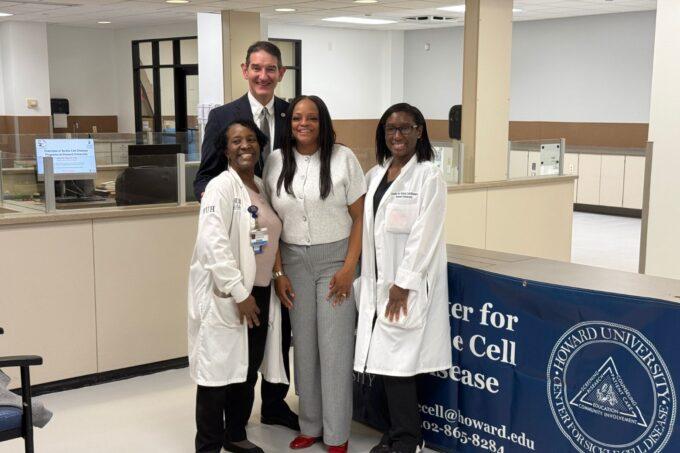$25,000 First-Time Homebuyer Grant: A Key to Building Black Generational Wealth

Kamala Harris’s proposed $25,000 first-time homebuyer plan is more than just a policy—it’s a lifeline for families who have long been locked out of homeownership. For Black families, in particular, this initiative could be a game-changer. The plan aims to address the financial barriers that many first-time buyers face, specifically targeting first-generation homeowners and people from economically disadvantaged communities. The hope is that this assistance will help build long-term generational wealth for those who need it most.
Breaking Down the $25,000 Grant
Imagine you’ve been renting for years, trying to save up for a house, but every time you feel like you’re getting close, something happens. Car repairs, medical bills, rising rents—life gets in the way. The down payment is often one of the biggest barriers to homeownership, and for Black families, that hurdle is often higher because of historical inequalities and fewer opportunities to build wealth. Harris’s plan offers a $25,000 grant that can be used for these crucial upfront costs—money that could be the key to unlocking homeownership.
Unlike many other programs that offer assistance in the form of a tax credit (which you wouldn’t see until the following tax season), this grant is immediate. The money is available at closing, helping families when they need it most. That means instead of scraping together every penny or having to settle for less favorable mortgage terms, you could move into your new home with more financial breathing room.
Who Qualifies?
To qualify for this program, you need to meet several criteria. First, you must be a first-time homebuyer, meaning you haven’t owned or cosigned on a mortgage in the past three years. The plan is also focused on first-generation homebuyers, ensuring that families who haven’t historically owned homes have a fair chance. For example, if your parents or guardians didn’t own a home in the last three years, you’re eligible. There are also exceptions for individuals who were in foster care, recognizing that these individuals may not have had the same family support as others.
Another crucial factor is income. Harris’s plan is designed to help moderate- and low-income families, but what exactly does that mean? Let’s break it down using some real numbers:
- The income limit is set at 120% of the area’s median income (AMI). For example, if you live in a city like Atlanta, where the AMI is around $82,000 for a family of four, you would need to earn less than $98,400 annually to qualify.
- In high-cost areas like San Francisco, where the AMI for a family of four is significantly higher—about $146,000—the income cap can go up to 180% of the AMI. This means families earning up to $262,800 could still qualify for the grant. These income thresholds recognize that different parts of the country have vastly different housing markets, and the program is flexible enough to account for that.
How This Impacts Black Generational Wealth
For Black families, this program is more than just a financial boost; it’s an opportunity to rewrite the narrative of homeownership. Historically, Black Americans have been systematically excluded from owning property. Redlining, discriminatory lending, and unequal access to resources have kept many families renting when they could have been building wealth through homeownership.
Consider this: Owning a home allows families to build equity, a form of wealth that grows over time as the home increases in value. When your family owns property, it’s something you can pass down to your children or borrow against to pay for college or start a business. It’s the kind of long-term wealth-building tool that many Black families have historically been denied.
Harris’s plan seeks to close that gap by helping more families become homeowners—people who might otherwise remain renters for life. This assistance means that families don’t have to settle for less favorable mortgage terms, which often come with higher interest rates, making homeownership more expensive in the long run. Instead, they can purchase homes with a stronger financial foundation.
Real Stories, Real Impact
Let’s take a closer look at how this might play out for someone like Vanessa, a 35-year-old teacher from Washington, DC. Vanessa has been renting for over a decade. She’s worked hard, saved what she could, but every time she’s almost ready for a down payment, something sets her back. With home prices rising quickly, she worries that she’ll never be able to afford her own place. If this $25,000 grant were available to her, it could help Vanessa cover a 10% down payment on a $200,000 home. Instead of continuing to pay rent and watching her savings deplete, she’d be able to invest in her future—and the future of her children.
Challenges Ahead
While this program has the potential to make a significant difference, it’s not without challenges. First, the legislation has yet to pass. Political hurdles may delay or alter the proposal, and while the grant would help families get into homes, the broader issue of housing affordability remains. Rising home prices, especially in competitive markets, could limit the impact of the $25,000 grant in some areas.
Additionally, for the plan to be fully effective, it must be part of a broader strategy that includes increasing the supply of affordable housing and combating discriminatory lending practices.
A Step Toward Change
Kamala Harris’s $25,000 first-time homebuyer plan has the potential to transform Black generational wealth in meaningful ways. By offering immediate financial assistance to first-time and first-generation homebuyers, the program addresses one of the biggest obstacles to homeownership. If passed, it would provide Black families with the chance to break the cycle of renting and start building lasting wealth, giving the next generation a financial leg up in a system that has historically kept them out.
Featured Listings
Nnena Kalu Makes History as First Learning-Disabled Artist to Win Prestigious Turner Prize
Nnena Kalu has officially made history. The Glasgow-born Nigerian artist has been...
Howard University Hospital’s Sickle Cell Center Gets Funding Boost, Offering New Hope for Patients Across D.C.
For many people living with sickle cell disease, the pain is not...
Steven Bartlett’s “Diary of a CEO” Podcast Just Hit a $425M Valuation & the Creator Economy Is Watching
What started as a mic, a flat in London, and a curiosity...
Billionaire Michael Bloomberg Invests $10M to Build a Direct K–12 Pathway Into Alabama HBCUs
A significant investment from billionaire Michael Bloomberg is opening new doors for...














Leave a comment